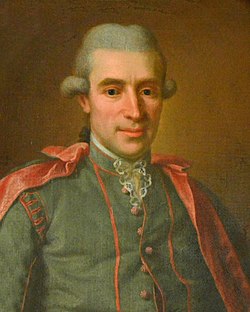– Early life and education:
– Born on 20 March 1735 to Barthold Bergman and Sara Hägg
– Enrolled at the University of Uppsala at age 17
– Studied mathematics and natural science
– Sent Linnaeus specimens of new insects
– Received his PhD in 1758
– Career:
– Lectured on physics and mathematics at Uppsala University
– Developed mineral classification based on chemical characteristics
– Elected to Royal Swedish Academy of Sciences in 1764
– Perfected process for making carbonated water in 1771
– Sponsored Carl Wilhelm Scheele
– Personal life:
– Married Margareta Catharina Trast in 1771
– Legacy:
– Uranium mineral torbernite and lunar crater Bergman named in his honor
– Works:
– Published “Opuscula physica et chemica” in 1779
– Wrote “Physick Beskrifning Ofver Jordklotet” in 1766
– Noted for “Essays, Physical and Chemical”
– Authored “Historiae chemiae medium seu obscurum aevum”
– Contributions to “Tekniska Museet”
Torbern Olaf (Olof) Bergman (KVO) (20 March 1735 – 8 July 1784) was a Swedish chemist and mineralogist noted for his 1775 Dissertation on Elective Attractions, containing the largest chemical affinity tables ever published. Bergman was the first chemist to use the A, B, C, etc., system of notation for chemical species.
Torbern Bergman | |
|---|---|
 Portrait by Ulrika Pasch | |
| Born | Torbern Olaf Bergman 20 March 1735 Katrineberg, Låstad parish, Sweden |
| Died | 8 July 1784 (aged 49) Medevi, Sweden |
| Nationality | Swedish |
| Alma mater | University of Uppsala |
| Known for | Chemical affinity tables |
| Spouse | Margareta Catharina Trast |
| Scientific career | |
| Fields | Chemist and mineralogist |
| Institutions | University of Uppsala |
| Doctoral advisor | Bengt Ferrner |
| Doctoral students | Johann Afzelius |
